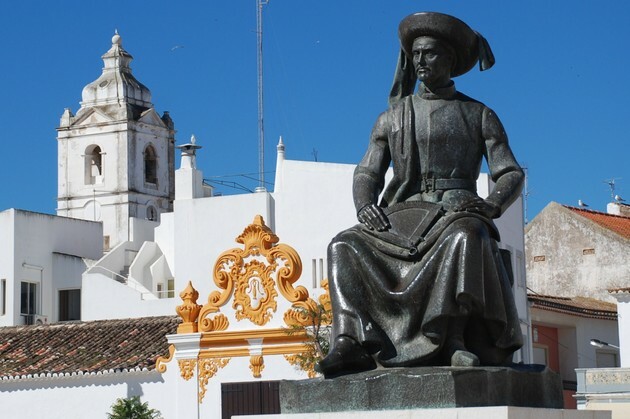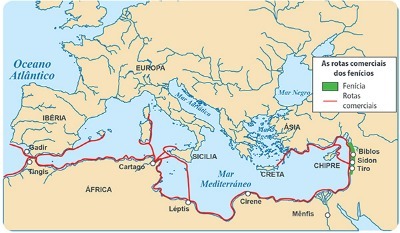THE Notre Dame cathedral is one of the most famous cathedrals in the France. It is located on Ilê de la Cité, an island located on the course of the River Seine, which runs through the city of Paris. The cathedral has Gothic architecture, and its construction spanned nearly two hundred years.
Today, it is one of the main tourist attractions in France and is a place that has been the scene of a series of important events in French and world history. Tragically, it was hit by a fire in 2019, which significantly damaged its structure.
Also access:Discover the history of the National Museum, hit by fire in 2018
Construction of the Cathedral
Notre-Dame Cathedral was built in 1163 by decision of Maurice de Sully, a bishop of Paris. This bishop was elected to office in 1160 and decided to build a larger cathedral for the city. The proposed new cathedral was named “Notre-Dame” as a tribute to the Virgin Mary (Notre-Dame, in French, means “Our Lady”).
THE city of paris at the time it was experiencing strong population and economic growth. It was the
capital of the capetingian kings (or Capetians) had a large number of artisans and merchants on the outskirts of the city, as well as being an important intellectual center in medieval Europe. The Parisian bishop suggested that the new cathedral be built on the site of an old cathedral located also on Ile de la Cité, the island that is located on the Seine.On the site where the Cathedral of Notre-Dame is now built, there were others religious temples. Historians have found some evidence to suggest the existence of a roman temple, probably to Jupiter, at the site of the cathedral. Archaeological evidence also suggests that there was a small Roman town called lutetia.
Later, a Christian temple was built on top of the pagan temple. The basilica was built in honor of St. Stephen, known for being one of the martyrs of the Early Church. This church was built in Romanesque architecture and later reformed by Merovingians and Carolingians.
In the 12th century, the aforementioned bishop of Paris decided to build a church larger than the old one, in addition to having decided that the new cathedral would be built in the new architectural style of the time, the style Gothic. THE Notre-Dame building was started on the 24th to the 25th of March 1163, and this event to lay the cornerstone of the cathedral was attended by the Pope Alexander III and of the french king Louis VII the Young.
The construction of the cathedral spanned 182 years and had four major phases:
- 1st phase: 1163-1182;
- 2nd phase: 1182-1190;
- 3rd phase: 1190-1225;
- 4th phase: 1225-1250.
The basic structure of the cathedral was built in these four phases, so much so that in the 13th century the cathedral was already frequented. In the 14th century, some adjustments were made, such as the extension of the transept arms and the installation of buttresses in the choir. The cathedral was considered completed in 1345. You names of architects who started the construction of the cathedral were lost.
Do not stop now... There's more after the advertising ;)
Notre-Dame Cathedral throughout history
In the 16th century, a revolt of Huguenots (French Calvinists) resulted in damage to some of the cathedral's statues. During the reign of Louis XIV, the greatest and longest-lived absolutist king of France, Notre-Dame underwent some modifications.
During the French Revolution, the cathedral ceased to house the masses of the Catholic Church and was transformed into a temple that housed the worship to reason and, later, the Cult of the Supreme Being. Both were religious cults that emerged in the revolutionary period, the first being an exaltation of man and his knowledge.
The second was a new religion that emerged in France during the revolutionary period and established by order of Maximilien Robespierre, leader of the Jacobins. After the Jacobins were overthrown and Robespierre guillotined, the cult of the Supreme Being was abandoned.
Due to the transformations that took place at that time, the cathedral was looted, as well as dismantling a tower built in the 13th century. The statues of the great portals and 28 statues of kings that were in the gallery of kings were also destroyed. These destroyed statues were of kings of Judea and Israel, but in the revolution they were believed to be statues of French kings. In the revolutionary period, Notre-Dame came to be used as a warehouse.
From 1801, when Napoleon Bonaparte already ruled France, the cathedral came to be used again as a Catholic church. The first Catholic Mass after the French Revolution took place on April 18, 1802. Notre-Dame, in fact, was the place chosen by Napoleon for his coronation as emperor of France, which took place in 1804.
Also access:Understand the causes that led to the beginning of the French Revolution in the 18th century
Renovation of Notre-Drame Cathedral

Details of the gargoyles that are built on top of Notre-Dame Cathedral.
In the 19th century, the Parisian cathedral was in a poor state of repair, and its demolition was even debated. French authorities planned to demolish it and use its stones to build new bridges in Paris. The demolition of the cathedral didn't happen because Victor Hugo, a great French writer, published a book that was a great success at the time: Notre-Dame de Paris.
This book was published in 1831, and its success was so great that King Louis Philippe I ordered the restoration of the cathedral in 1844. THE work by Victor Hugo he had a great influence on this decision because he made the cathedral known worldwide and reported the bad state in which it was.
Notre-Dame in recent years

Interior of Notre-Dame Cathedral (Credits: Tung Cheung/Shutterstock)
Notre-Dame Cathedral is currently one of the most visited sights in Paris, city that alone receives annually 13 million tourists. The amount of visits and lack of renovations in recent years have raised serious debates about the cathedral's renovation. Neither the French government nor the French Catholic Church wanted to bear the costs of renovating the cathedral. Thus, the Archdiocese of Paris launched in 2017 a request for donations so that the renovation could be carried out.
On April 15, 2019, during the restoration works, a fire took place in the cathedral. The damage was considerable, but apparently less than expected. Some parts of the cathedral were completely destroyed, and it is suspected that the structure is shaken. The fire that hit the cathedral generated a strong commotion, and donations were already approaching R$ 3 billion reais. French authorities still do not know the real dimensions of the destruction for the restoration work to be carried out.
*Image credits:k_samurkas and Shutterstock
By Daniel Neves
Graduated in History



